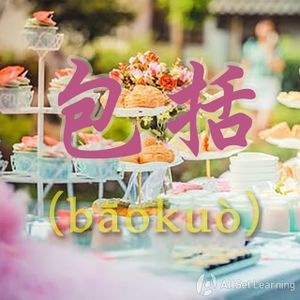Difference between revisions of "Expressing "including" with "zainei""
| Line 51: | Line 51: | ||
{{POS|Verbs}} | {{POS|Verbs}} | ||
{{Used for|Expressing quantity}} | {{Used for|Expressing quantity}} | ||
| + | {{Translation|include}} | ||
{{Translation|including}} | {{Translation|including}} | ||
Revision as of 03:13, 27 June 2017
| This article is a stub. Editors can help the Chinese Grammar Wiki by expanding it. |
"包括"本身可以做动词,宾语可以是一个,也可以列举多个。此外,"包括"也可以放在句首作状语,相当于英文的"including"。
Basic Usage
Structure
Subj. + 包括 + Obj.1 ( , + Obj.2, Obj.3 ... )
Examples
- 他 说 “咱们”,当然 包括 你 。 .
- 我 每 个 月 的 房租 不 包括 水 电 费 。 .
- 公司 的 福利 包括 很 多 方面。 .
- 他 对 很 多 话题 都 很 感兴趣,包括 政治。 .
- 简历 一般 包括 个人 信息,教育 背景,工作 经历 等。 .
Using 包括 with 在内
在英文里,状语的位置通常比较灵活,如"包括"就常常放在句尾,表示补充。但在汉语里,"包括"只能在放在句首,一般会跟"在内"合用,口语也可以省略。
Structure
包括 + Obj. (+ 在内),一共 ⋯⋯
Examples
- 包括 。 .
- 包括 。 .
- 包括 。 .




